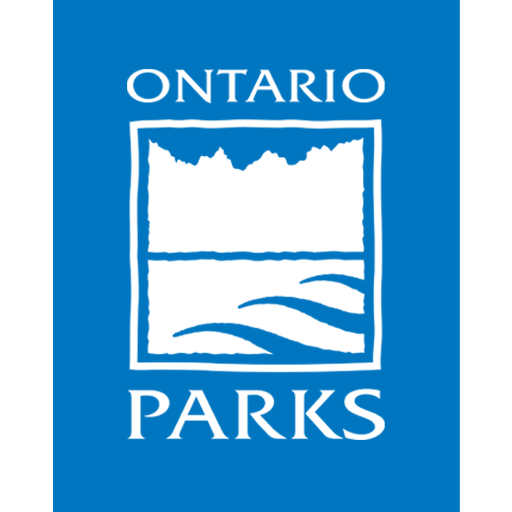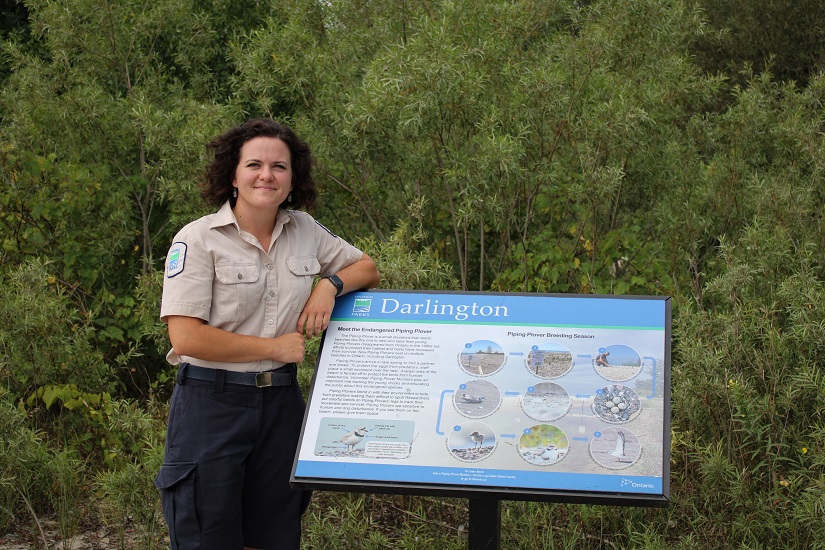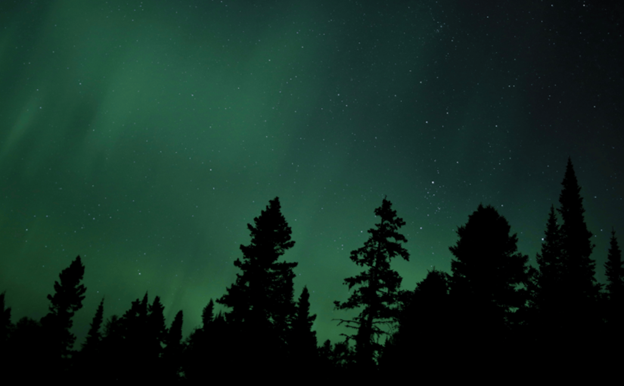Happy International Day of Women and Girls in Science!
Our scientists are absolutely integral to Ontario Parks, working as researchers, biologists, ecologists, and more!
Take a look at a few of our awesome women scientists:
Jess Matthews, Chief Park Naturalist
Jess Matthews oversees the protection of one of the most biodiverse places in Ontario: Rondeau Provincial Park. This involves the coordination of an enormous number of projects.

Jess leads yearly monitoring for the endangered Fowler’s Toad, and collects data on White-tailed Deer health and their impacts on the park. She restores park ecosystems, removes invasive species, and creates habitat for species at risk.
She also collaborates with researchers who, with Jess’ support, have found that Rondeau is the perfect location to study snakes, bumblebee diversity, the impacts of invasive Phragmites, and more.
“Being able to come to work knowing that my efforts will ultimately improve the quality of rare, fragile ecosystems and their dependent wildlife is incredible. Sharing those efforts with visitors for lasting community engagement makes this work even more rewarding.”
Monica Fromberger, Piping Plover Biologist
Monica has been working with the Piping Plovers in Ontario Parks’ Southeast Zone since 2020. She protects and monitors this endangered shorebird that nests on beaches at some of our Great Lakes parks, including Darlington, Presqu’ile, and North Beach.
This species recovery work is important as the Piping Plover was once extinct from Ontario for about 30 years. With effective conservation efforts we now see 65-75 breeding pairs in the Ontario/U.S. Great Lakes Piping Plover population!
A big part of what Monica does is educate the public about the plight of Piping Plovers, their life history, and habitat requirements. She also monitors their habitat, predators in the area, and seeks every opportunity to gain more knowledge that will help with Piping Plover conservation.
“I’ve learned so much from other women working in science and am grateful to the women of the past who paved the way in this field for all us ladies today!”
“Working with this endangered species is so exciting because not only am I able to contribute to their conservation, but I also get to see the faces of our park visitors light up with curiosity when they find out just how rare the bird they are looking at really is.”
Anurani Persaud, Senior Ecologist
Long before Anurani became a senior ecologist, she started out working as a research assistant in Killarney Provincial Park and collaborated extensively with the Ministry of Environment, Conservation and Parks.

Since then, she has spent many days paddling through the lakes of Killarney and Muskoka, and completed a couple of graduate research projects, one of which focused on understanding how climate change will modify foodwebs in temperate lakes.
In her role as a senior ecologist, Anurani collaborates with other staff to ensure science is incorporated into policies, strategies, and procedures for planning and management of Ontario Parks. Her work also involves collaborating with our conservation partners to recognize and account for their lands as protected and conserved areas, and grow the network of protected and conserved areas across our province.
Beyond her work in the sphere of science, Anurani also has a deep interest in diversity, inclusion, and social justice, which led her to participate in an Anti-Racism Working Group.
Sonje Bols, Learning and Education Leader
Sonje has been working in the Discovery Program for over 10 years! Discovery involves educating park visitors, as well as undertaking a variety of research and resource monitoring projects.
She’s been involved with Public Wolf Howls and Canada Jay research in Algonquin Provincial Park, and turtle nest monitoring at Grundy Lake Provincial Park.

These days Sonje works for the Northeast Zone office working on a variety of Discovery projects and delivering school programs. Her science background (she has a Master’s degree) and Discovery experience help bring the science curriculum alive for students!
“You never know how your day will go. You could run a kids’ program in the morning, pull some invasive Garlic Mustard in the afternoon, and then get a call about an injured Canada Goose on the park beach after that! I’ve always loved working in science and for protected areas. It’s fulfilling work and you feel like you’re making a difference.”
Julie Belliveau, Assistant Ecologist
As an assistant ecologist, Julie works on the promotion and maintenance of ecological integrity within the Southeast Zone parks.
Some of her projects include restoring sensitive habitats and ecosystems through monitoring and protection of species at risk, monitoring of hyperabundant wildlife and their ecological impacts, managing invasive plant species, planting native plants and tree species, and conducting controlled prescribed burns to contribute to habitat restoration.
“It is important to find and strive for a balance in our ability to enjoy nature while also protecting its health, function, and diversity. I am so grateful to be able to work towards this goal with a provincewide team that includes many of my female colleagues in many different roles. I grew up with a love of nature and I hope that the work that I do can inspire others to not give up and to protect it so we can all enjoy it.”
Hannah Dodington, Discovery Program Resource Technician
 This past summer, Hannah spent many hours completing surveys for Ontario’s third Breeding Bird Atlas out of Killbear Provincial Park.
This past summer, Hannah spent many hours completing surveys for Ontario’s third Breeding Bird Atlas out of Killbear Provincial Park.
This involved identifying birds by song and sight, observing bird behaviour, and monitoring bird nesting areas. All of these observations were documented using breeding and behaviour codes, which provide information for global research and conservation initiatives.
“My work as a woman in science is important not only as far as my contributions in an ecological sense, but also because it is what gives me fulfillment as an individual. Any person, no matter their gender, should be able to pursue a career that provides them with a feeling of purpose and happiness.”
Danni Gartshore, Master’s of Biology candidate at Lakehead University
Danni is currently researching the impacts of the invasive Spiny Water Flea on the growth of fish. She conducted her field work in Quetico Provincial Park in the summer of 2021, and is also looking at historical data dating back to the early 1970s.
Her work is partially funded by the Quetico Foundation, and will help the park to understand the impacts the Spiny Water Flea may have on fish in lakes in Quetico with this aquatic invasive species.
“The research we are doing in Quetico can have great implications on invasive species and fisheries management in Canada. Improving our knowledge of the natural world and making a positive impact on the environment has been a life-long dream of mine and I feel honoured to contribute in a meaningful way.”
To all amazing women in science working passionately to understand and protect our natural spaces: thank you for your hard work and expertise, and congratulations for all your achievements!
Why are your scientists picking up wildlife? Can I pick up snakes and turtles too?
Please do not handle wildlife. The staff members featured here are trained scientists engaged in professional research. These scientists are following a strict animal care protocol approved by the Ministry of Northern Development, Mines, Natural Resources and Forestry. These protocols review the desired outcome of the research, and ensure measures are taken to put the least possible amount of stress on the animal. We ask that you always observe animals from a distance for both the safety of you and the animal.





